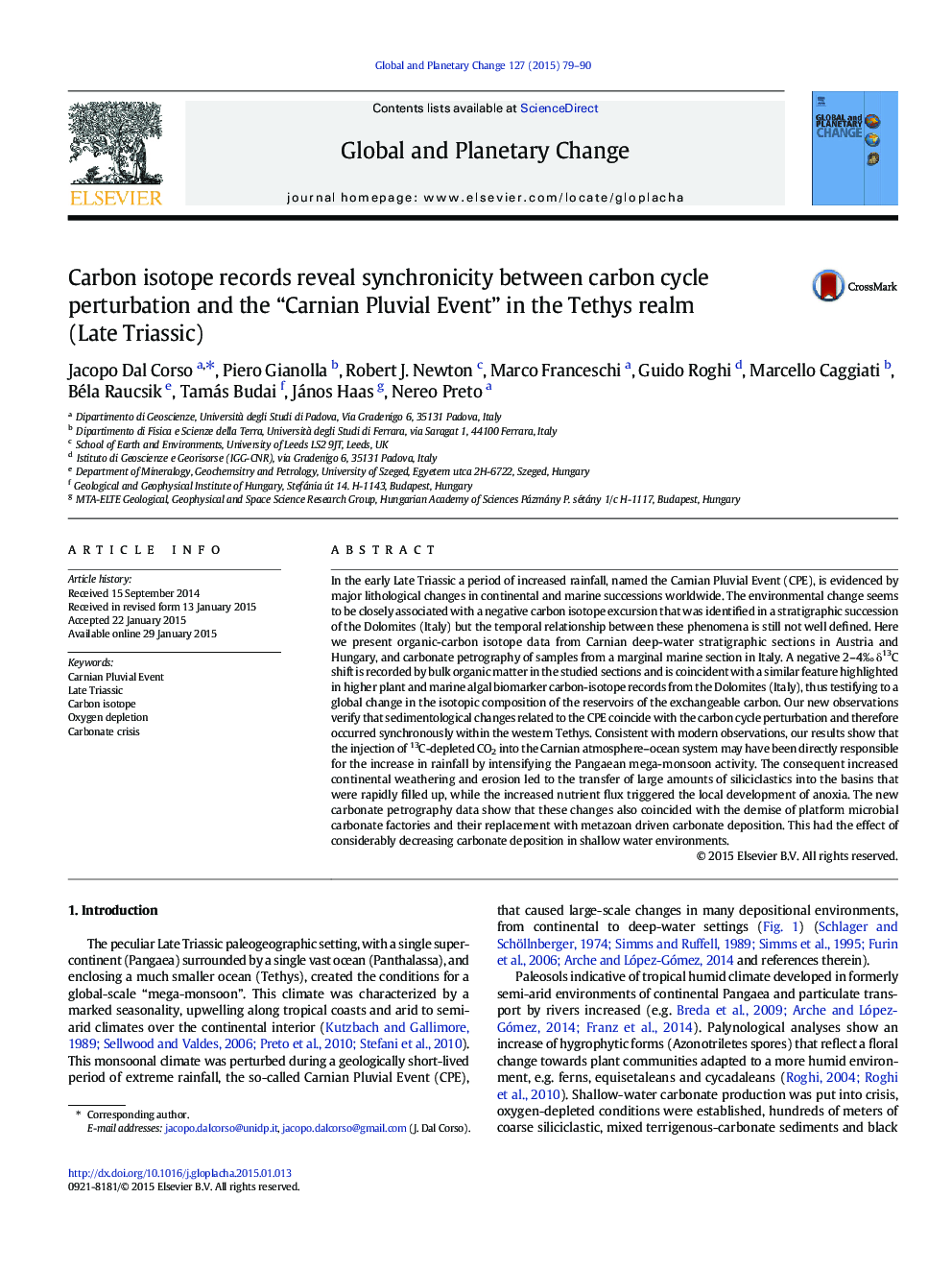| کد مقاله | کد نشریه | سال انتشار | مقاله انگلیسی | نسخه تمام متن |
|---|---|---|---|---|
| 4463371 | 1621655 | 2015 | 12 صفحه PDF | دانلود رایگان |

• New δ13CTOC data from Carnian (Late Triassic) sections of the western Tethys basins
• A negative δ13CTOC shift always coincides with the onset of the Carnian Pluvial Event.
• C-cycle disruption led to the abrupt sedimentological changes observed in the studied basins.
In the early Late Triassic a period of increased rainfall, named the Carnian Pluvial Event (CPE), is evidenced by major lithological changes in continental and marine successions worldwide. The environmental change seems to be closely associated with a negative carbon isotope excursion that was identified in a stratigraphic succession of the Dolomites (Italy) but the temporal relationship between these phenomena is still not well defined. Here we present organic-carbon isotope data from Carnian deep-water stratigraphic sections in Austria and Hungary, and carbonate petrography of samples from a marginal marine section in Italy. A negative 2–4‰ δ13C shift is recorded by bulk organic matter in the studied sections and is coincident with a similar feature highlighted in higher plant and marine algal biomarker carbon-isotope records from the Dolomites (Italy), thus testifying to a global change in the isotopic composition of the reservoirs of the exchangeable carbon. Our new observations verify that sedimentological changes related to the CPE coincide with the carbon cycle perturbation and therefore occurred synchronously within the western Tethys. Consistent with modern observations, our results show that the injection of 13C-depleted CO2 into the Carnian atmosphere–ocean system may have been directly responsible for the increase in rainfall by intensifying the Pangaean mega-monsoon activity. The consequent increased continental weathering and erosion led to the transfer of large amounts of siliciclastics into the basins that were rapidly filled up, while the increased nutrient flux triggered the local development of anoxia. The new carbonate petrography data show that these changes also coincided with the demise of platform microbial carbonate factories and their replacement with metazoan driven carbonate deposition. This had the effect of considerably decreasing carbonate deposition in shallow water environments.
Journal: Global and Planetary Change - Volume 127, April 2015, Pages 79–90